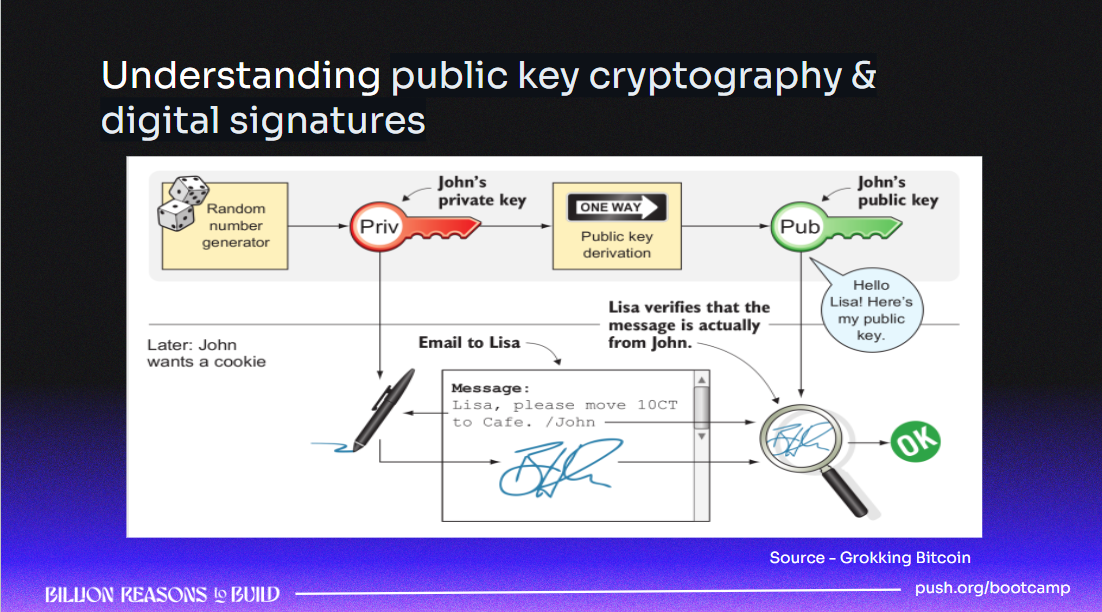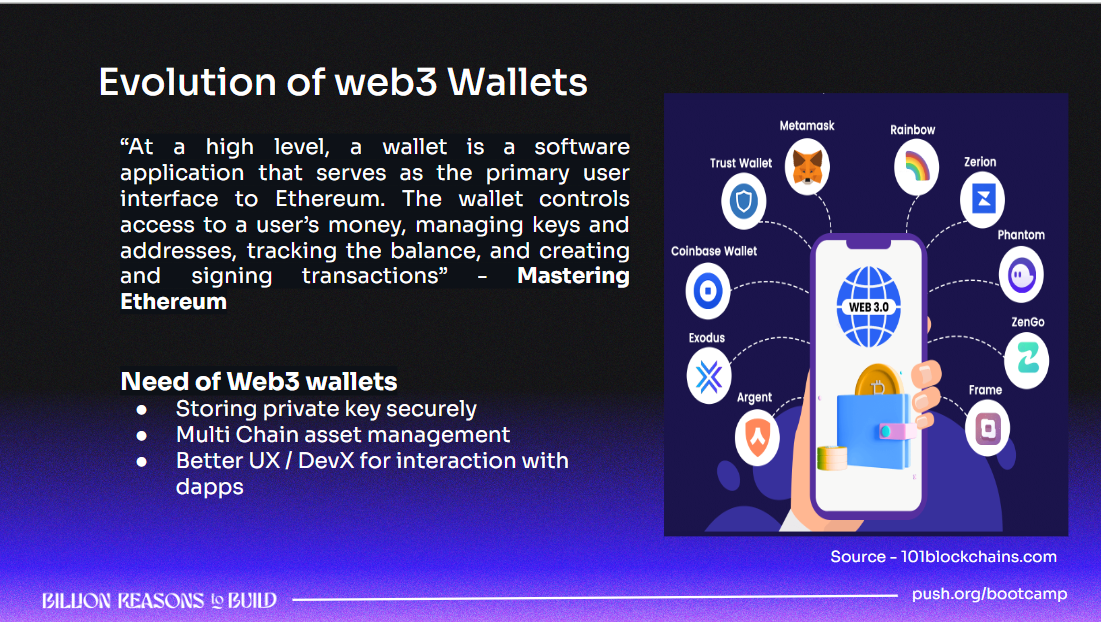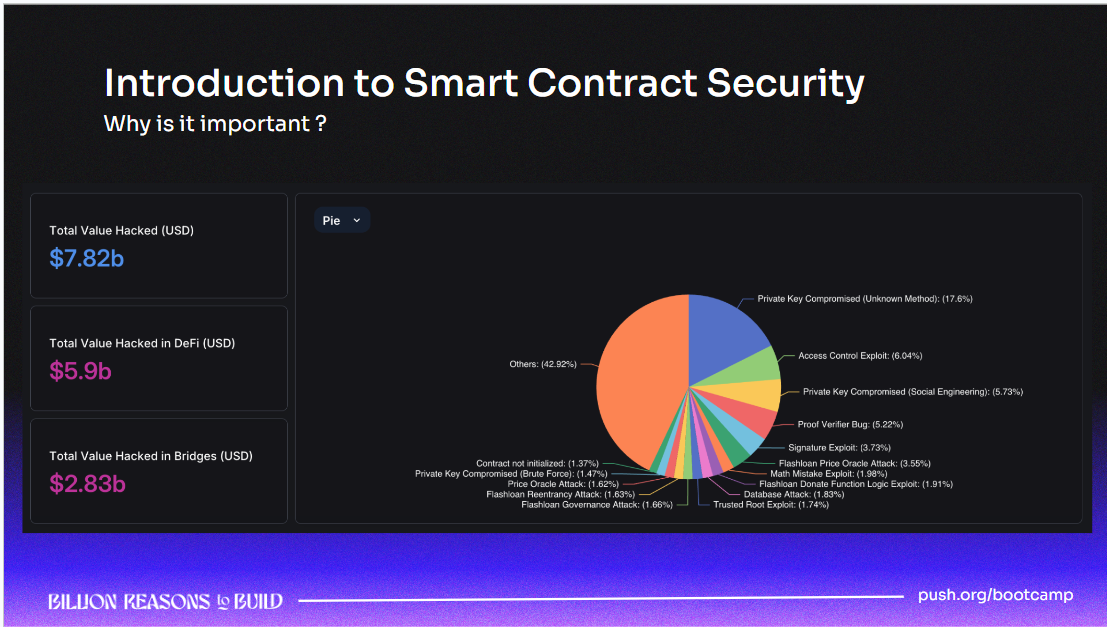Understanding Smart Contract Development and Web3 Wallets
 Rajdeep Singha
Rajdeep Singha
Cryptography in Web3
Importance of Cryptography in Web3
Firstly, The speaker introduced us with Cryptography is fundamental to the operation of Web3, ensuring that decentralized applications (dApps) are secure, private, and trustworthy. It underpins the entire structure of blockchain technology, enabling the creation of decentralized networks where data integrity and user privacy are preserved without a central authority.

Ensuring Security, Privacy, and Integrity
Security: Cryptographic algorithms like SHA-256 and elliptic-curve cryptography (ECC) provide robust security mechanisms that protect data from unauthorized access and tampering.
Privacy: Techniques like zero-knowledge proofs and encryption ensure that user data remains private while allowing for verification of transactions without exposing sensitive information.
Integrity: Cryptographic hash functions maintain the integrity of blockchain data by ensuring that any alteration in the data can be easily detected, thereby preserving the accuracy and consistency of the ledger.
Escrow in Web3
Definition and Significance
Escrow in Web3 refers to a smart contract that holds funds or assets in a neutral account until predefined conditions are met. It is significant because it enables trustless transactions in a decentralized environment, ensuring that neither party has to rely on a third-party intermediary to facilitate a deal.
How Escrow Works in Decentralized Transactions
In decentralized transactions, escrow smart contracts automatically enforce the terms of the agreement. When a condition is met (e.g., delivery of goods), the contract releases the funds to the appropriate party. This process reduces the risk of fraud and ensures that both parties fulfill their obligations.
How Escrow Works on the Blockchain
Mechanics of Escrow Services
Escrow services on the blockchain operate through smart contracts that execute automatically when predefined conditions are met. For example, in a real estate transaction, a buyer's funds can be held in escrow until the property title is transferred. Once the blockchain verifies the transfer, the smart contract releases the funds to the seller.
Examples and Scenarios
Freelance Work: A freelancer might use an escrow service to ensure they are paid upon project completion.
E-commerce: An escrow can hold payment until the buyer confirms receipt and satisfaction with a product.
Real Estate: Funds can be held in escrow until all paperwork and property transfers are verified.
Tools to Get Started in Web3
Essential Tools and Resources
Wallets:
MetaMask: A widely used Ethereum wallet that supports dApp interaction.
Trust Wallet: A mobile wallet for multiple cryptocurrencies and dApps.

Development Platforms:
Ethereum: The most popular platform for creating dApps and smart contracts.
Polkadot: A platform for interoperability between blockchains.
Solidity: The primary programming language for writing Ethereum smart contracts.

Learning Resources:
CryptoZombies: An interactive platform for learning Solidity.
Ethereum.org: Offers comprehensive guides and documentation.
Coursera and Udemy: Online courses on blockchain and cryptocurrency development.
In summary, cryptography is essential in Web3 for ensuring secure, private, and integrity-driven decentralized applications. Escrow mechanisms, facilitated by smart contracts, enable trustless transactions by holding assets until predefined conditions are met. Newcomers to Web3 can leverage wallets like MetaMask, development platforms like Ethereum, and educational resources like CryptoZombies to start building and interacting with decentralized applications.
Subscribe to my newsletter
Read articles from Rajdeep Singha directly inside your inbox. Subscribe to the newsletter, and don't miss out.
Written by
